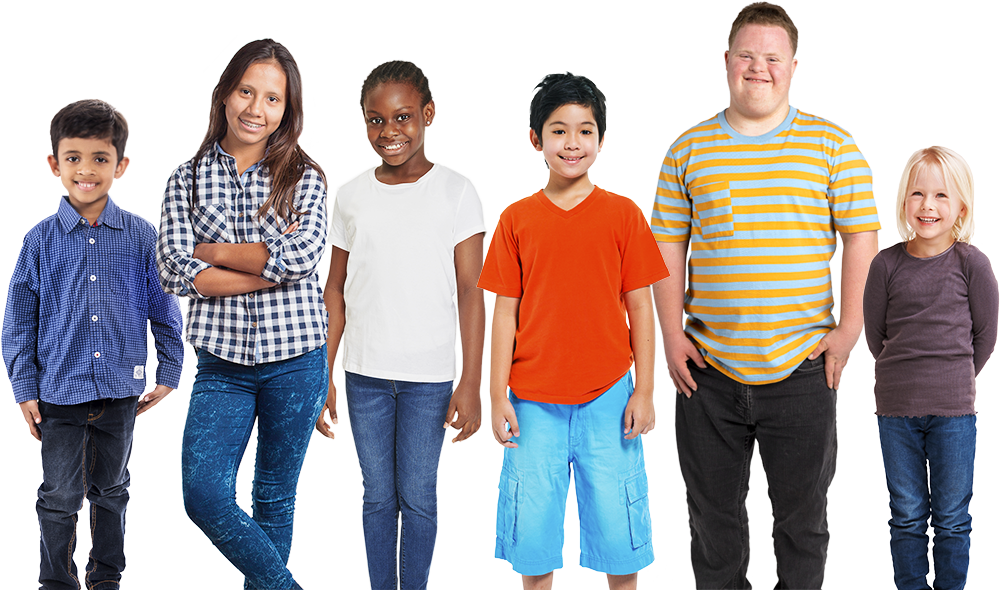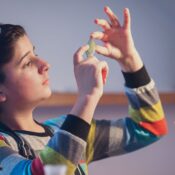Transforming Music Education: Beyond the Classroom, Into the World
When we think about education, subjects like math and science often take center stage. But what about music? More and more schools are recognizing that music education is just as essential, helping students grow academically, emotionally, and socially.
As education evolves, more schools are embracing a more holistic approach to learning, looking beyond test scores to develop well-rounded individuals. Music education plays a powerful role in this by strengthening cognitive skills, encouraging self-expression, and fostering collaboration.
School music rooms provide dedicated spaces where students can explore their creativity, process emotions, and build a sense of community. When schools invest in well-equipped music rooms, they provide students with opportunities that go far beyond traditional academics, shaping their confidence, communication skills, and lifelong appreciation for the arts.
The Role of Music Education in Holistic Development
Music has a profound impact on emotional development. Studies consistently show that engaging with music can have a significant positive effect on emotional health. Research indicates that playing an instrument or singing can lower stress levels, with one study highlighting a reduction in cortisol, the body’s primary stress hormone, after musical participation.
Other findings demonstrate that music education programs promote emotional resilience, providing students with a constructive outlet for their feelings. These emotional benefits help reduce anxiety and improve overall well-being, particularly for young people navigating the challenges of adolescence.
Additionally, participation in music education programs enhances social-emotional learning, teaching students valuable skills such as empathy, patience, and discipline. When students work together to create music, they learn to listen, adapt, and collaborate, sharpening skills that are essential for both academic success and personal growth.
For more detailed insights into these findings, read the full research here.
The Cognitive Benefits of Music Education
Music is a powerful tool for cognitive development, offering benefits that extend beyond creativity and enjoyment. A study published in Cerebral Cortex found that after just six months of music lessons, 8-year-old children showed noticeable improvements in reading and understanding speech. The research showed that musical training helped children better process the pitch of speech, a skill important for understanding language. Interestingly, kids who took painting lessons didn’t see the same benefits, highlighting how music specifically helps the brain.
Similarly, arts and education enrichment programs have shown that exposure to music and other creative activities can improve school readiness and language skills, especially for children from disadvantaged backgrounds. For example, a study on a preschool arts program published in Early Childhood Research Quarterly found that kids who participated in arts enrichment demonstrated better vocabulary and pre-academic skills than those who did not.
These studies highlight the brain’s flexibility, showing that even short periods of music and arts training can have a lasting impact on cognitive abilities. By incorporating music education into daily learning, parents and educators can help children improve their memory, attention, problem-solving skills, and emotional development, making music a key part of a holistic education.
Creativity and Self-Expression in Music Education
Music education has the remarkable ability to spark creativity. Imagine a student picking up a guitar for the first time, their fingers awkwardly strumming chords. Yet, as they continue, something magical happens. They begin to discover a new way of expressing themselves. They are finding a voice they didn’t know they had.
Music, in its many forms, encourages students to experiment with sound, rhythm, and lyrics, activating their problem-solving skills and promoting an innovative mindset. That’s the magic of music education. It transforms the classroom into a playground for the imagination.
When students have access to a variety of instruments, like pianos, drum kits, or electronic music equipment, they’re free to explore different genres and create their own music. Instead of just learning notes, they begin to tell their own stories through the melodies they compose. This process helps them turn abstract ideas and emotions into something real. Composing their own songs or writing lyrics gives students a chance to express themselves in a way that boosts their creativity and critical thinking. They also learn to take risks, make decisions, and refine their ideas, skills that go beyond music and can help them succeed in life.
Music and Special Needs Education
Music education is a valuable resource for students with special needs, particularly those with autism spectrum disorders. Research has shown that music therapy can significantly enhance communication, social interaction, and emotional regulation in these children. A 2018 study in JAMA Network highlighted that improvisational music therapy led to noticeable improvements in social communication among children with autism, emphasizing music’s role as an inclusive learning tool.
Further studies have proven that structured musical interventions can boost emotional regulation and engagement in children with Autism Spectrum Disorders (ASD). A strong link exists between music and increased engagement for young children with autism, showing the powerful impact music can have on their development.
While music is recognized as a valuable tool for communication, more research is needed to explore its full potential in language development. A review in Frontiers in Psychology highlights music therapy’s promise in supporting both preverbal and verbal communication skills in children with autism. Experts suggest that collaborative efforts between music therapists and speech-language pathologists can amplify the effectiveness of music-based interventions, offering a more holistic approach to language development.
By fostering inclusive music programs, schools can provide opportunities for all students to thrive, regardless of their learning abilities.
Building a Sense of Community Through Music
As students grow emotionally, music also helps build strong connections with their peers. Music naturally fosters connection, creating a powerful sense of community within schools. When students participate in activities like choir, band, or songwriting, they learn the value of teamwork and cooperation. It’s in these moments of working together that students build relationships that last.
Music also has a unique ability to bridge gaps. Students from different backgrounds and cultures find common ground through shared musical experiences, such as school concerts and performances. These shared experiences strengthen school spirit and camaraderie. When students perform together, and when the community comes together to support them, it creates a sense of belonging and unity. These moments reinforce the connections that make a school a true community.
The Impact of Well-Equipped Music Rooms
A thriving music program requires more than just talent and passion — students and teachers need access to quality instruments and equipment. Unfortunately, budget constraints can often leave schools struggling to provide their students with well-equipped school music rooms. Without the proper resources, students miss out on opportunities to experiment and engage with music, develop their skills, and explore their creativity.
How TeacherGiving Supports Music Educators
This is where TeacherGiving makes a difference. By connecting educators with donors and funding, TeacherGiving can help educators access essential resources like pianos, guitars, drums, sheet music, and technology. With the right support, schools can create vibrant music rooms where students can grow, collaborate, and develop a lifelong appreciation for the arts.
TeacherGiving is a platform that helps bridge the gap between budget shortfalls and the needs of educators. Each year, teachers spend billions of dollars out of their own pockets to supply their classrooms. Through TeacherGiving, we can ease that burden and ensure that every student has access to the tools they need to succeed.
Unlike traditional grants, which can be time-consuming and difficult to secure, TeacherGiving offers a simple and transparent way for teachers to get the support they need.
Through personalized educator pages, teachers can share their stories and specific classroom needs, making it easy for supporters to contribute directly. The platform also provides flexibility, allowing educators to purchase supplies from any store, including local businesses, ensuring they get exactly what their students need.
For supporters, TeacherGiving offers a trusted and transparent way to make a real impact. Every educator is verified, and supporters can track their contributions to see how they’re being used. Whether it’s funding a new set of instruments or repairing existing ones, every donation helps enrich students’ learning experiences and strengthens music education programs.
Conclusion
Scientific research has shown that music education is a cornerstone of a holistic education, offering numerous benefits that contribute to students’ development and enhance their overall educational experience. These spaces help prepare students for a bright and fulfilling future.
To continue fostering artistic and personal growth, schools must prioritize providing well-equipped music rooms. Organizations like TeacherGiving are key in making this possible, ensuring that music education remains an integral part of a well-rounded curriculum.
By advocating for music education and supporting initiatives that equip teachers with the necessary resources, we can create a more inclusive and dynamic learning environment for all students.
Share:
Inspired by the TeacherGiving blog?
Discover resources, strategies, and stories that empower educators and transform classrooms. From fundraising tips to free downloadable tools, our blog is your go-to guide for innovative teaching and impactful learning. Subscribe today and never miss an update!
Recent Posts
12 States Lead Way in Providing Above Average Education
Navigating Digital Reading: Empowering Students in Internet-Based Learning
Unlock the Importance of Non-Classroom Learning Environments
End of the School Year Celebrations: Why They Matter

Be a Champion for Classrooms
Whether you’re an educator needing support or a supporter wanting to make a difference, TeacherGiving is here for you. Create an account or donate to help educators and enrich students’ learning experiences. Join us today and be a champion for classrooms!






